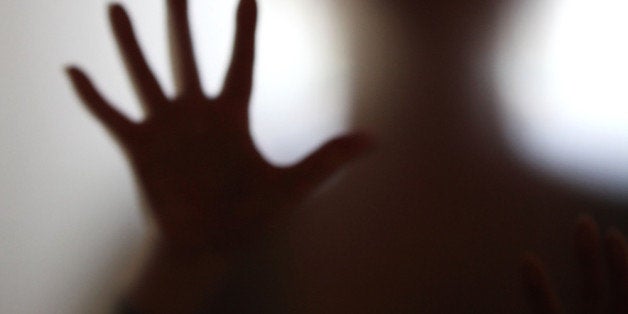
By Matthew Stock
Lausanne, SWITZERLAND - Neuroscientists have succeeded in creating 'ghosts' in the laboratory by tricking the brains of test subjects into feeling an unexpected 'presence' in the room.
Under normal circumstances the brain is able to form a unified self-perception, but lead researcher Olaf Blanke explained that when this malfunctions the brain creates a second representation of its body.
"Most of the research predicts that we cannot tickle ourselves because our brain precisely predicts of one hand, of my hand, touching my body or touching one or another position. However, if this is not fully integrated because I'm doing it or if I cannot correctly predict because somebody else were to touch me; in those cases of uncertainty, very often in those cases of double touch, the response is that you feel ticklish or tickled by somebody else," said Blanke who is leading the research at the Swiss Federal Institute of Technology in Lausanne, Switzerland (EPFL).
Blanke's team began by analyzing the brains of 12 patients with neurological disorders who have reported having such a secondary representation of their body, in other words a ghost sensation. MRI scans revealed abnormalities with three brain regions involved in self-awareness, movement and the sense of position in space. These brain regions together contribute to multi sensory signal processing, important for the perception of one's own body.
The scientists then conducted an experiment to 'trigger' a similar neurological sensation in healthy subjects.
Blindfolded and wearing ear-plugs, test subjects performed movements with their hand attached to a robotic device. Behind them, the robotic device reproduced their movements and touched them on the back. When conducted in real time, the participant's brain could adapt and recognize it as their own movement because of the synchronized movement. However, when the scientists introduced a temporal delay of just a few milliseconds, the distorting of temporal and spatial perception induced the 'ghostly' feeling.
"We built a robot which allows us to distort this signal, which makes it hard - or impossible actually - our robot makes it impossible for our healthy subjects now to predict those signals. And one side effect of this was, instead of saying that I'm touching myself or that I'm touching with my index finger my own body; subjects reported in those scenarios where we distorted the signal that somebody else was touching them. And this somebody else; actually some subjects reacted very strongly and they reported that not only that somebody else was touching them, but somebody else was also present. So strong, that some of them decided not to finish the experiment," said Blanke.
The robot creates a disconnect between the movements subjects make and the sensations they were expecting, mixing up "sensorimotor" brain signals of individuals so that their brains no longer recognized input signals as belonging to their own body. Blanke said the system mimics the sensations of some patients with mental disorders or of healthy individuals under extreme circumstances.
The study, published in Current Biology, said that "simple sensorimotor conflicts induced, in healthy subjects, an experience that shares crucial aspects with positive, first-rank symptoms in schizophrenia".
Blanke says the main aim of the study is to better understand some of the symptoms of neurological or psychiatric conditions, such as schizophrenia. He hopes the research could lead to a similar robotic system that doesn't induce neurological symptoms, but helps patients overcome such sensations.
"We are very interested in pursuing this line of work to build similar robotic devices based on our prototype that do not induce psychotic symptoms in healthy subjects but a similar robot that could be used to down regulate psychotic symptoms in actual patients."
Such therapies, he says, could include a wearable device that would help neurological patients down-regulate - or reduce - these feelings; in effect a device to reverse the sensations they created in the lab.
"A more future version we are still working on at the moment could be a completely wearable set-up of the device that you have seen. So this is something that the patient will have maybe inserted in his clothes; smart textiles in a way. And should there be strong manifestations in this case, one could provide feedback in a way that is now not optimized to induce such a psychotic state but to dis-regulate or to down-regulate such a state."

